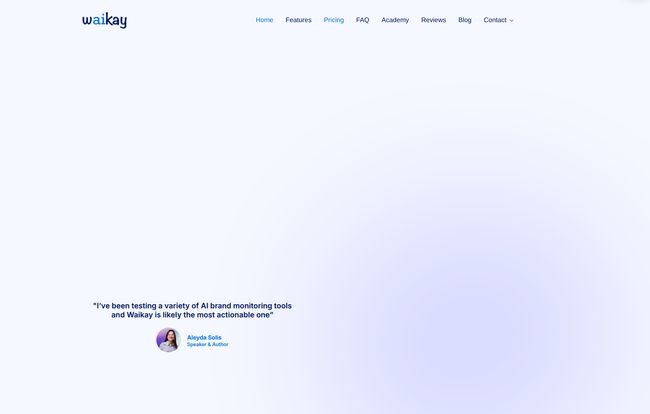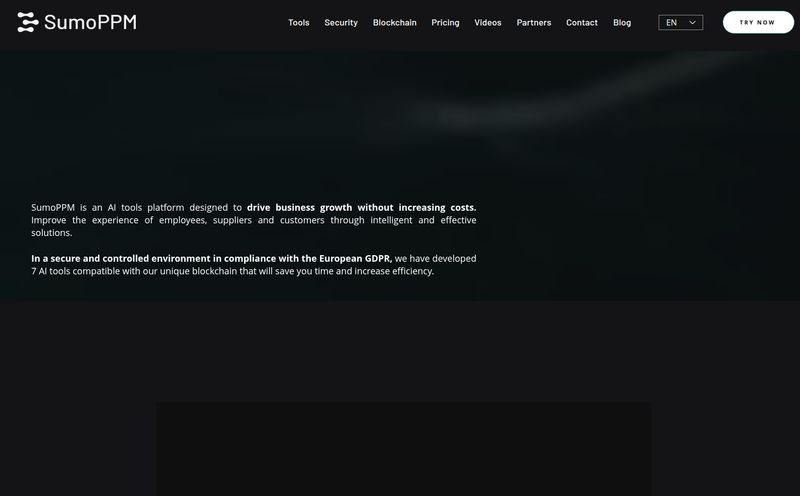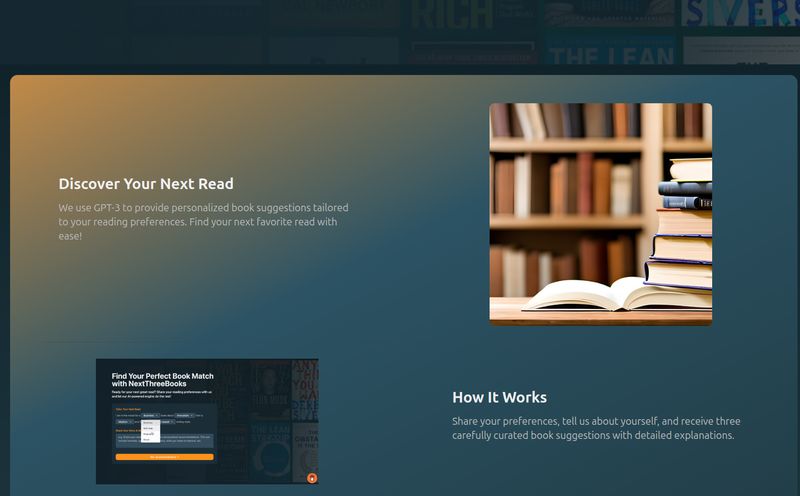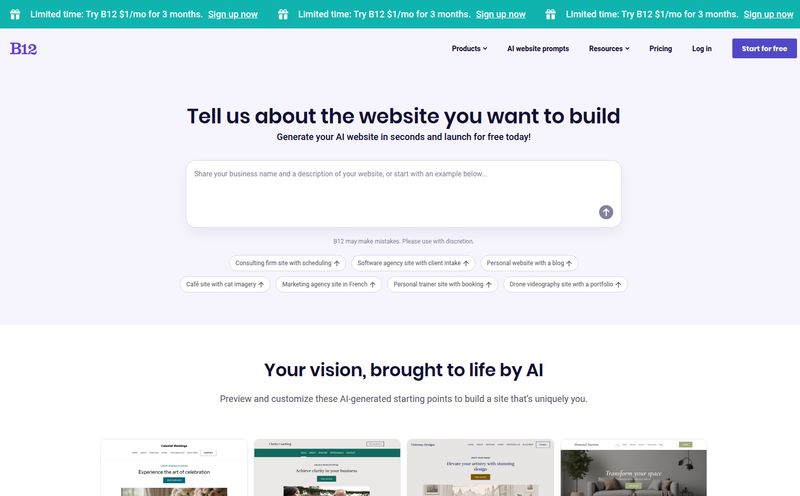For the past decade, we've all been playing the same game, right? The SEO game. We chase Google's algorithm, we build links, we optimize content, we do the dance. We got good at it. We thought we knew the rules. Then, generative AI crashed the party like the Kool-Aid Man, and suddenly, the walls of our carefully constructed SERP castles are looking a bit… wobbly.
I've spent months staring at Search Generative Experience (SGE), Perplexity, and a dozen other AI search interfaces, feeling that familiar mix of excitement and dread. What does this mean for traffic? For clicks? More importantly, what are these things saying about my clients' brands? Because it's not just pulling from a knowledge graph anymore; it's synthesizing, inferring, and sometimes, let's be honest, just making stuff up.
That's the rabbit hole I was tumbling down when I stumbled upon Waikay. And after playing around with it, I have to say, it feels less like another complicated tool to learn and more like the first real map we've been given for this new territory.
What Even is Waikay? Peeling Back the Curtain
So, what is this thing? At its heart, Waikay is a platform designed to give you a clear window into what AI models actually think and know about your brand. Forget guessing. Forget running a few anecdotal searches on ChatGPT and hoping for the best. Waikay is built to monitor, analyze, and help you actively manage your brand's narrative across the major AI platforms.
Think of it like this: for years, we've had reputation management tools for social media and review sites. Waikay is that, but for the burgeoning world of AI. It’s your own personal PR firm for the new robot overlords, ensuring they’re getting the right story.
Why You Should Care About AI Brand Monitoring Right Now
Some folks in the industry are still in a 'wait and see' mode with AI's impact on search. I get it. But in my experience, waiting until a problem is smacking you in the face is a terrible strategy. AI isn't a future problem, it's a now problem. And a now opportunity.
We're seeing the rise of a whole new discipline: AIO, or AI Optimization. It's the next frontier. It’s about ensuring that when a large language model (LLM) is asked about your brand, your products, or your industry, the information it provides is accurate, positive, and complete. Why? Because an AI hallucination—a completely fabricated 'fact'—could state your product has a defect it doesn't, or that your competitor is the industry leader for a service you pioneered. The damage can be immediate and insidious, because it's presented with such algorithmic authority.
This is where active monitoring becomes non-negotiable. You can't fix what you can't see.
My First Impressions and Key Features That Stand Out
Hopping into Waikay, the first thing I noticed was the clean interface. The second thing? The testimonials from Aleyda Solis and Barry Adams. Okay, that gets my attention. These aren't just random users; they're respected, no-nonsense pros in the SEO space. If they're saying a tool is powerful and actionable, I'm leaning in.
But beyond the social proof, a few features really popped.
Multi-Model Analysis (The Real Game-Changer)
This is, for me, the most critical piece of the puzzle. Waikay doesn't just check ChatGPT. It runs its analysis across ChatGPT, Google's AI, Claude, and Sonar. This is huge. Anyone who's played with these models knows they have distinct 'personalities' and access different data pools. What Claude knows about your brand might be wildly different from what Google's SGE spits out. Relying on one is like only checking your rankings on Bing and ignoring Google. Waikay gives you that full, 360-degree view of your AI digital footprint.
AIO Action Plans and Source Intent Analytics
Here’s where the tool lives up to Aleyda's 'actionable' comment. Waikay doesn't just throw data at you and say "good luck." It generates AIO Action Plans. It's not just a report card; it's the homework assignment. It helps you identify the gaps and gives you a strategic direction. The Source Intent Analytics digs into why the AI is saying what it's saying by looking at the sources it's pulling from. This bridges the gap between classic SEO (improving source content) and the new world of AIO.
The Hallucination Hunter
The platform has a feature specifically to "Check Facts & Hallucinations." Hallelujah. I can't tell you how terrifying it is to see an AI confidently state that your B2B SaaS company, I dont know, also sells pet food. It's absurd, but it happens. Being able to systematically track and identify these falsehoods is the first step in combating them. It turns a chaotic, random threat into a manageable risk.

Visit Waikay
Benchmarking Against the Competition
Of course, they have competitor comparison. This is just good old-fashioned digital marketing savvy. You can see how the AI perceives your brand versus your top 3 rivals. Are they being mentioned as the leader? Is their messaging coming through more clearly? This is competitive intelligence for the AI age, and frankly, its a bit like approved digital espionage. I love it.
Let's Talk Money: Waikay Pricing Plans
Alright, the all-important question: what's this going to cost? The pricing seems geared towards serious users, from in-house teams to agencies, which makes sense given the tool's power. It's not really a hobbyist tool.
They have a few main tiers, and as you can see from their page, they're pretty transparent about it. The Small Teams plan starts at $69.95/month, which is perfect for an in-house brand manager who needs to get a handle on their AI presence. You get to track up to 120 prompts and have two users. For smaller agencies or businesses managing a few brands, the Large Teams plan at $199.95/month seems like the sweet spot, bumping you up to 360 prompts. And for the big players, the Bigger Projects plan at $449.95/month offers a huge number of prompts and extra support like account setup consultancy. They also mention enterprise-level plans for the giant agencies tracking hundreds of brands.
It’s an investment, for sure. But when you compare it to the potential cost of a damaged brand reputation, it starts to look pretty reasonable. They also have a way to get started for free, so you can kick the tires before committing, which I always appreciate.
The Not-So-Shiny Bits (Because Nothing's Perfect)
I believe in honest reviews, so let's touch on the potential downsides. This is not a magic wand. First, Waikay requires active participation. It gives you the insights and the action plan, but you have to do the work. It’s a compass, not a self-driving car.
Second, its effectiveness is inherently tied to the AI models it's watching. If an AI model is having a particularly weird day, the data will reflect that. That's not Waikay's fault, but it's the reality of the ecosystem we're working in. Finally, to really squeeze all the juice out of this lemon, you probably need a bit of technical SEO or digital marketing knowledge. A complete beginner might find the sheer amount of data a little overwhelming without context.
Is Waikay Worth the Investment for Your Business?
So, the final verdict. In my opinion? Yes, for the right business, Waikay is absolutely worth it. If you're a brand manager, a marketing agency, or an SEO professional who is looking at the horizon and seeing the massive wave that is AI search, this is your surfboard.
It's for people who want to move from a reactive state of panic to a proactive state of control. It’s for those who understand that their brand's story is now being told by algorithms, and they want to be part of the editing process.
If you're a small local blogger or a one-person shop with a tiny digital footprint, it might be overkill for now. But for any established business or agency, ignoring your AI reputation is a risk I wouldn't be willing to take.
Waking Up to the New Reality
For a while, it felt like we were all flying blind in this new AI-driven world. Tools like Waikay are the first signs of a real instrument panel being installed in the cockpit. It’s not about fighting the change; it’s about understanding and adapting to it. It provides clarity and, most importantly, a plan. And in a landscape that changes by the week, having a plan is a massive competitive advantage. It's a solid tool, and one I'll be keeping a very close eye on.
Frequently Asked Questions About Waikay
- What exactly is Waikay?
- Waikay is a specialized platform for AI Optimization (AIO). It helps businesses monitor, understand, and manage how their brand is represented across major AI search and chat models like ChatGPT, Google AI, and Claude.
- How does Waikay help with SEO?
- While not a traditional SEO tool, Waikay is a crucial companion. It helps you understand which source content AI is using to form its opinions about your brand. By improving that source content (a core SEO task), you can directly influence your AI representation, which is becoming a huge part of online visibility.
- Is there a free trial for Waikay?
- Yes, their website mentions a way to get started for free. This allows you to test the platform's capabilities and see if it's a good fit for your needs before committing to a paid plan.
- What AI models does Waikay monitor?
- Waikay tracks your brand across several key AI models, including ChatGPT, Google's AI (used in SGE), Anthropic's Claude, and Perplexity's Sonar. This multi-model approach is one of its strongest features.
- Can Waikay directly fix incorrect information about my brand?
- No, Waikay cannot directly edit what an AI says. Instead, it acts as a diagnostic tool. It identifies the inaccuracies (hallucinations) and often points to the source material the AI is using, giving you an action plan to correct the information at its source, which in turn influences future AI responses.
- Who should use Waikay?
- Waikay is ideal for in-house marketing teams, brand managers, digital PR professionals, and SEO agencies who manage the online reputation and visibility for one or more brands. Any business serious about its digital presence in the AI era should consider it.
Reference and Sources
- Waikay Official Website
- Waikay Pricing Page
- A nod to the insights of Aleyda Solis and Barry Adams.



